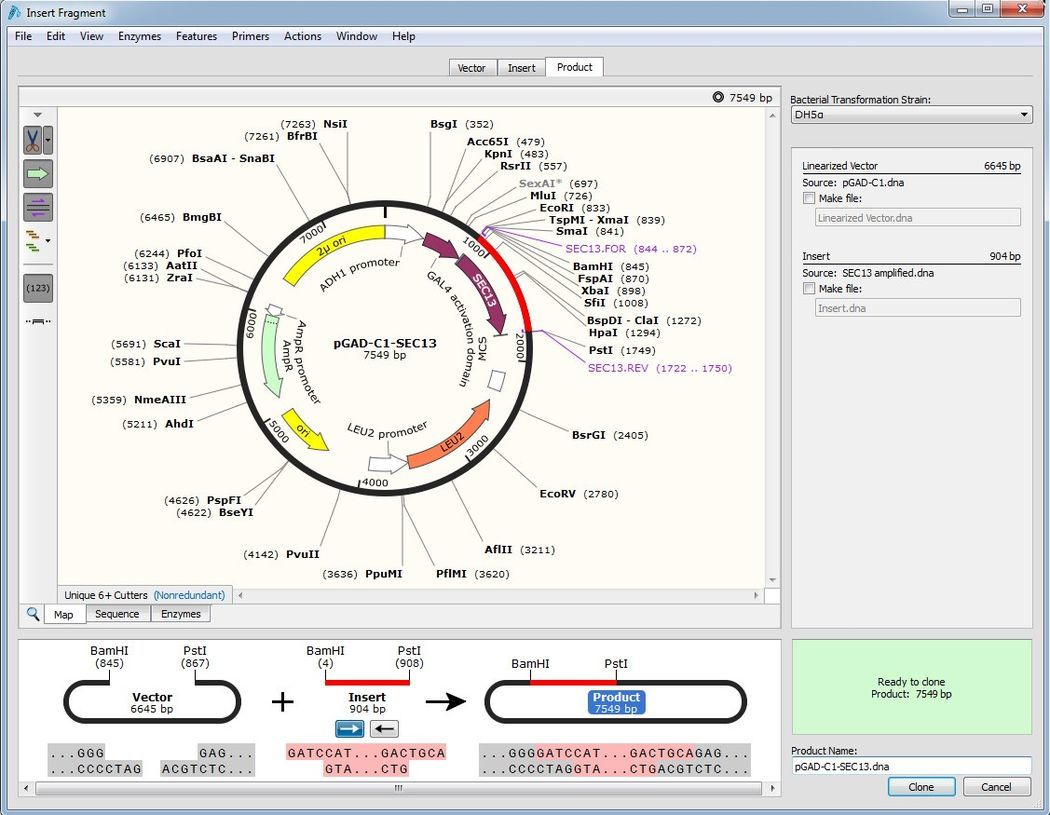

This is just a glimpse of the powerful visualization tools that SnapGene provides.Analysis of colony-based PCR 16s rRNA data You will observe that the arrow representing the GFP will have no white spaces, indicating that they are the same. You can also click on align sequences and select align multiple sequences, then add the GFP sequence so you can compare it with itself. The white spaces in the arrow show the parts of the yeGFP that differ from the GFP sequence. A new feature (brown arrow) should now be added to your window above the two black lines that represent your original GFP genetic sequence. Click on the alignment tool (which is the last tool on the left pane of the window) and navigate to the location where the yeGFP file you just created is located. After creating a new SnapGene file with the yeGFP, save it and go to the window with the original GFP. This alternative GFP is a synthetic, yeast-enhanced GFP (yeGFP) obtained from Candida albicans. This post will use another GFP sequence that was obtained from a different source to check for any differences. To compare genetic sequences, first create a new file with the other genetic sequence, using the steps outlined previously. This is useful for a number of reasons in identifying genes that may express similar proteins. This can be seen in the image below.Īpart from visualizing genetic sequences, another convenient feature of SnapGene gives you the ability to compare genetic sequences. The two thick black lines simply represent the genetic sequence. Finally, the restrictions sites within the genetic sequence are shown in black text above the two thick black lines. The direction of the arrow also shows the direction in which the gene should be transcribed to properly express the GFP protein. The green arrow at the bottom shows the location of the GFP within the given sequence. Click on add 1 feature to create a new SnapGene file with the GFP sequence and a feature that highlights the GFP sequence.Īfter adding the sequence, a visual representation of the GFP will be shown in the SnapGene window. After clicking the OK button, the GFP sequence should be correctly identified in the next window that pops up. In addition, check the “Detect common features” box to enable a SnapGene feature that identifies and highlights genetic sequences based on information in its database.


We’re using this option to prevent any confusion because GFP is not in a plasmid. After pasting the sequence into the textbox, select linear under topology. You can access this genetic sequence by following this link and clicking the Sequence tab on the web page. ) For this demonstration, we will be using a green fluorescent protein (GFP) extracted from Aequorea victoria (jellyfish). (You can get some sample sequences online from UniProt or GenBank. To do this, open SnapGene, click on new DNA file and paste your genetic sequence in the textbox in the window that pops up. The first step in using SnapGene is to import a given genetic sequence or an existing construct. SnapGene highlights the individual sequences within a genetic construct and provides tools that make it easy to edit these constructs.
ALTERNATIVES TO SNAPGENE SOFTWARE
Specialized software like SnapGene makes it easy to visualize and edit genetic sequences. However, dealing with long sequences of ACTGs can easily become difficult because these sequences tend to be extremely long. Handling genetic sequences is an important aspect of fields such as synthetic biology and bioinformatics.


 0 kommentar(er)
0 kommentar(er)
